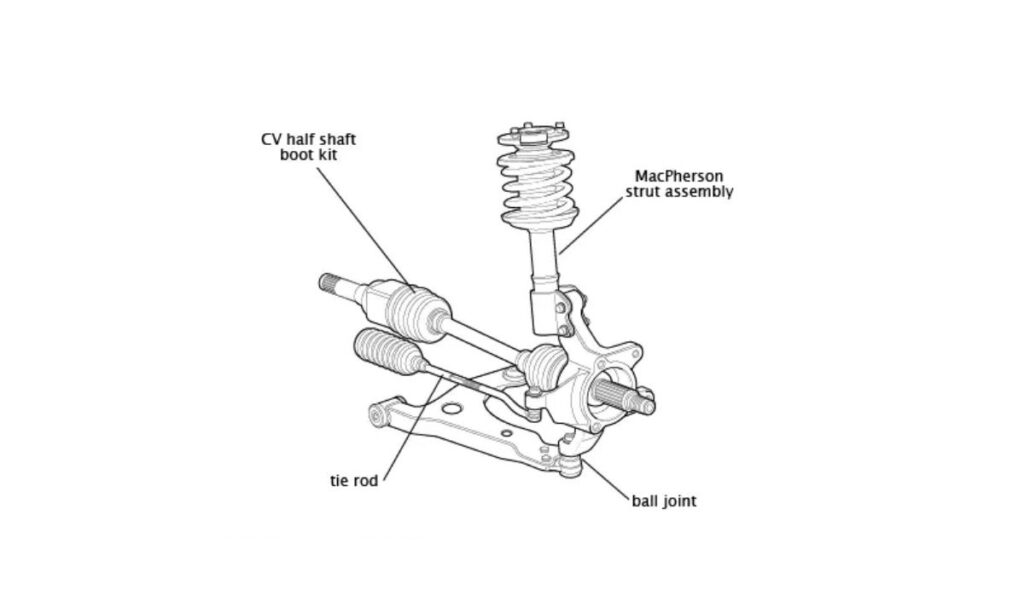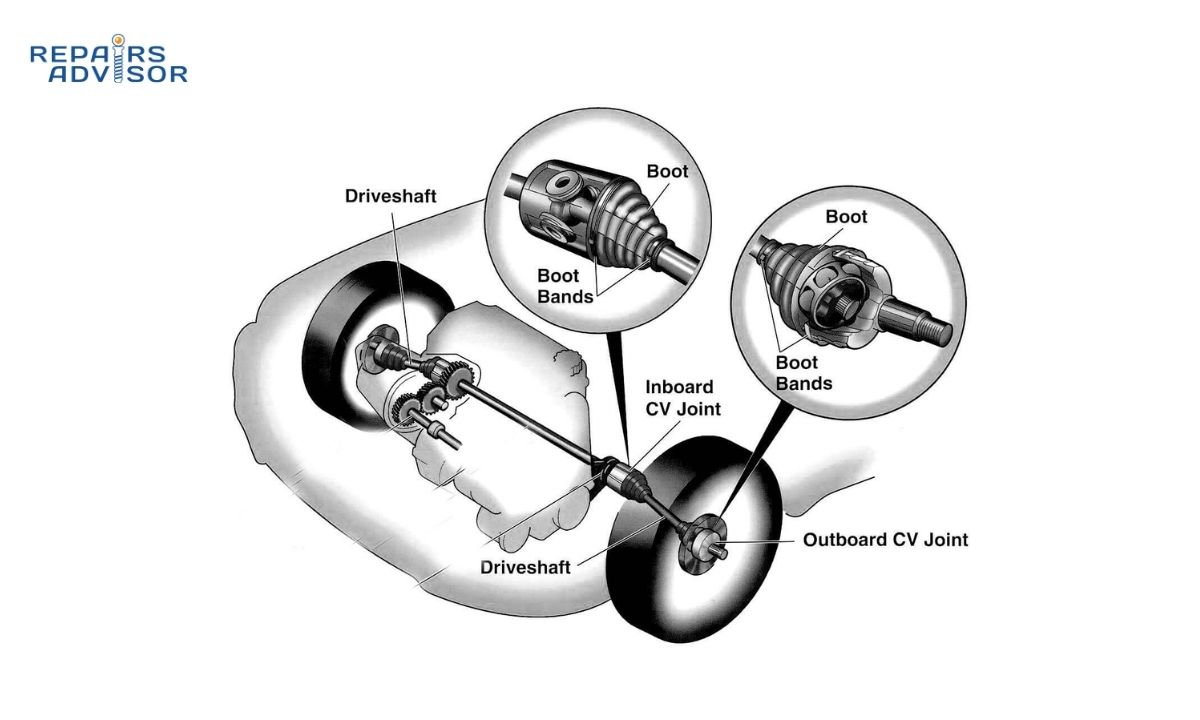Your car’s wheels need to turn and flex over bumps while still getting power from the engine. That’s where the CV (Constant Velocity) half-shafts come in – they deliver power smoothly to your wheels regardless of steering angle or suspension movement. But these critical components have a vulnerability: their CV boots.
A CV half-shaft boot kit includes the rubber boot (or cover), special grease, and clamps. Its entire purpose is to securely protect the CV joint at the end of the axle shaft. Think of it as a rubber glove, keeping vital grease in and harmful dirt, water, and debris out of the precision-machined CV joint.
Because these boots are made of rubber, exposed to road grime, temperature changes, and constant flexing, they can eventually fail. When a CV boot goes bad, it’s a big deal because it leaves the sophisticated CV joint vulnerable.

How to Tell if You Have a Bad CV Half-Shaft Boot
Catching a bad CV boot early can save you from a much more expensive repair down the line. Here are the key signs:
- Cracking or Splitting of the Rubber Boot:
- This is the most direct and common sign. Visually inspect your CV boots (you might need to turn the steering wheel to full lock to get a better view). Look for any visible cracks, tears, or splits in the rubber material. Even a small crack can be enough to start a problem.
- Grease Slung Around the Area of the Damaged Boot:
- If the boot is torn, the grease it’s supposed to contain will start to escape. You’ll often see greasy splatters or residue on the inside of your wheel, on the brake components, or on the undercarriage near the wheel. This “slinging” of grease is a clear indicator that the boot’s protective seal is compromised.
- Clicking Sound When Going Around Corners:
- This is the dreaded symptom that signals the CV joint itself has likely been damaged. If the boot has been torn for a while, allowing dirt and moisture in and grease out, the CV joint will start to wear. The most common result is a distinct clicking, popping, or clunking noise when you’re turning a corner (especially when accelerating). This sound typically gets louder the sharper you turn and the more power you apply.

CV Half-Shaft Boot Repair Advice (Act Fast!)
A damaged CV boot, if caught early enough, can sometimes be replaced without replacing the entire axle assembly. However, here’s a crucial consideration: unseen damage may have already occurred to the axle joint, even if it’s not making noise yet. Dirt getting into the joint rapidly grinds down its components, which can lead to problems (and noise!) later on, even after a new boot is installed.
Here’s what your mechanic will advise:
- Boot Replacement (If Caught Very Early): If the boot has just torn and there’s no evidence of contamination or noise from the joint, replacing just the boot might be an option. This involves removing the axle, cleaning the old joint, installing a new boot with fresh grease, and clamping it properly.
- Axle Half-Shaft Replacement (Common Recommendation):
- If the joint is making noise (clicking/clunking), a full axle half-shaft replacement is strongly recommended. At this point, the joint is already damaged, and simply replacing the boot won’t fix the internal wear.
- An axle half-shaft replacement is also often recommended if the part has been removed during another repair (e.g., transmission work) and an inspection shows that it’s already worn and due for replacement soon. It’s smart to address it while it’s already accessible.
- Opt for New Over Rebuilt:
- When replacing axle half-shafts, we strongly recommend using new replacement CV axle shafts instead of rebuilt units. Due to dropping part prices, it has become very economical to do so. More importantly, new units are significantly more reliable and durable than rebuilt units, which can sometimes have a shorter lifespan or residual issues from their previous life. It’s a small extra cost for much greater peace of mind.
Your Repair Advisor’s Take:
The CV half-shaft boot might seem like a simple piece of rubber, but it’s the guardian of a precision-engineered and expensive component: your CV joint. A torn boot is an open invitation for trouble, allowing grease to escape and destructive contaminants to enter, leading to rapid joint wear.
Don’t ignore that grease splatter or that clicking sound when you turn! Addressing a bad CV boot or a worn CV joint quickly can prevent a more costly breakdown or even a loss of power to your wheels.
For accurate diagnosis and effective repair, always consult a qualified mechanic. They can properly inspect your boots, determine the extent of any joint damage, and recommend the best, most reliable solution for your vehicle. Get those boots checked and keep your drivetrain running smoothly – schedule an inspection today!
